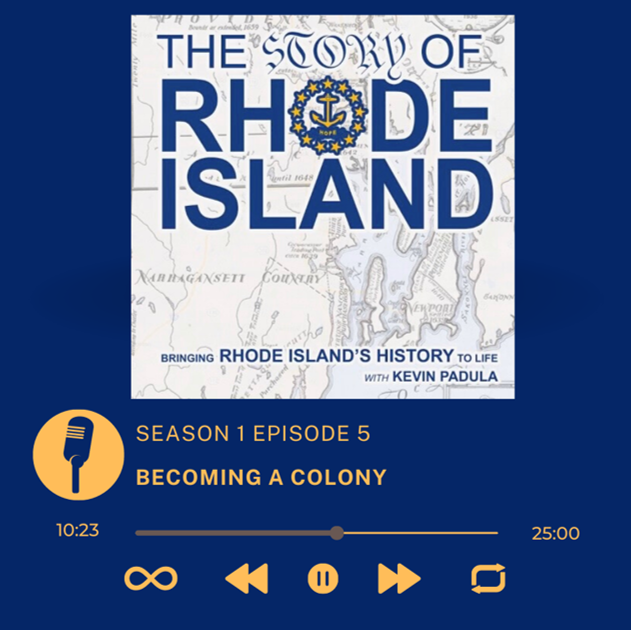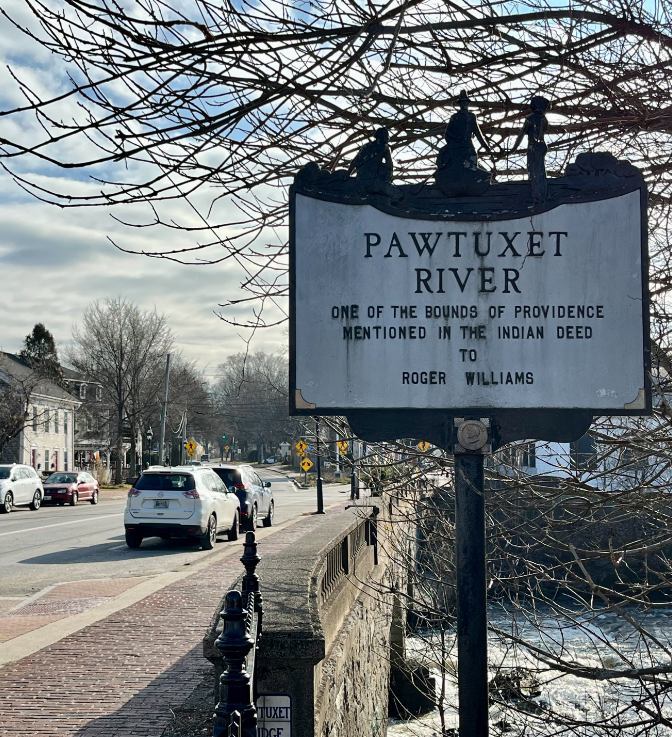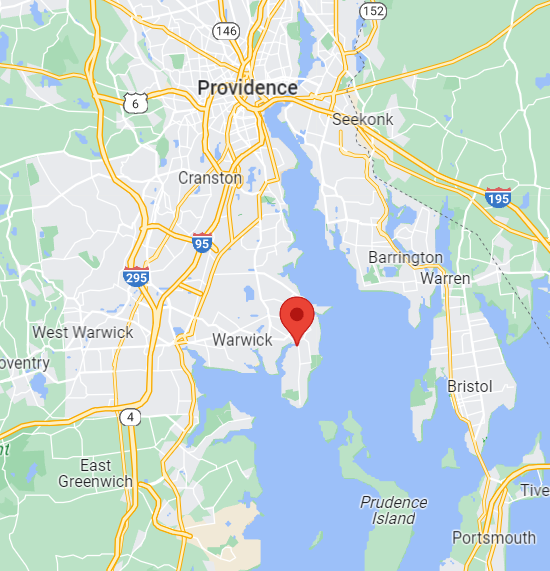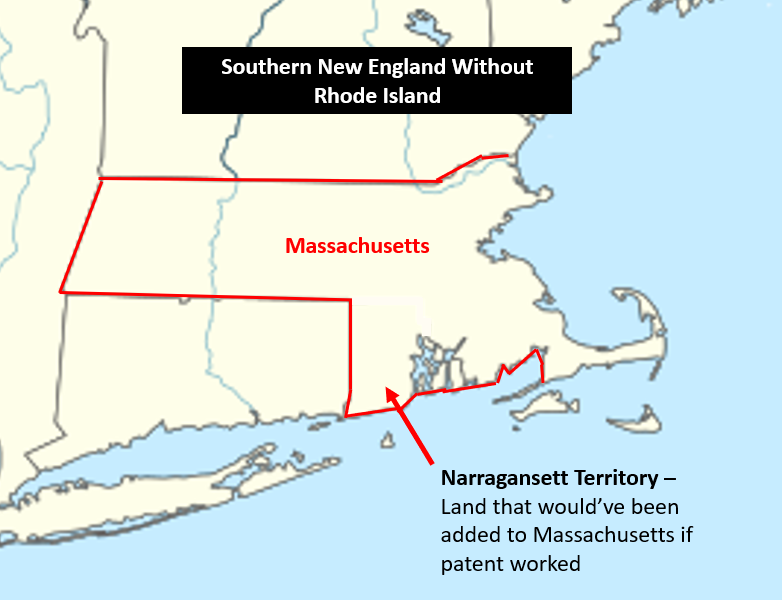In an effort to protect their sovereignty, the radical towns around Narragansett Bay unite as one and become an official English colony.
21 minutes | 1642 - 1644
Hear About:
📜How Massachusetts managed to claim jurisdiction over part of Rhode Island
📜The founding of Warwick, Rhode Island
📜The founding of the Rhode Island Colony

William Arnold
Miantonomi


Cocumscussoc | North Kingstown, RI
The land that makes up present day Wickford village and it surrounding area was once known to the Narragansett people as Cawcawquissick, a name that was later anglicized as Cocumscussoc. Roger Williams' trading post in Cocumscussoc was the first English settlement in the area in 1637. Unfortunately it was destroyed in the late 17th century during King Philip's War. Today a monument lies along Route 1, commemorating roughly where Williams trading post was located.

Pawtuxet Village | Cranston & Warwick, RI
For almost 2 decades, Massachusetts claimed that the village of Pawtuxet (now part of Cranston but still part of Providence in the 17th century) was under their jurisdiction. The William Arnold faction, the leaders of Pawtuxet, fought relentlessly to ensure that their village remained part of Massachusetts. Eventually, Roger Williams overcame these challenges and Pawtuxet was returned to Rhode Island.



Massachusetts Expands into Narragansett Territory | 1636 - 1643
During the early 1640s the Massachusetts Bay Colony aggressively attempted to swallow up the radical towns founded around Narragansett Bay so that they could expand into Narragansett territory.
- Picture #1 - Massachusetts' southern border ends at the northern end of Nipmuc & Narragansett territory. The towns of Providence, Portsmouth, and Newport are sovereign in Narragansett territory.
- Picture #2 - Massachusetts claims jurisdiction over Pawtuxet village which lies on the southern bounds of Providence. Samuel Gorton founds the town of Warwick., originally called Shawomet.
- Picture #3 - Along with Pawtuxet village, Massachusetts also claims jurisdiction over Warwick.



The Pequot Path
The Narragansett and Pequot People live on the land that makes up present day Rhode Island for thousands of years before Europeans arrived. One of the primary paths they used to travel along the coast of this land was known as the Pequot Path. It ran along the water all the way from present day southeastern Connecticut to Providence. That ancient trail is still loosely traveled to this very day but today it's known as Scenic Route 1a and Route 1.

The severity of Samuel Gorton's gunfight with Massachusetts
In the fall of 1643, 40 Massachusetts soldiers marched down the ancient Pequot Path through Providence and onto a piece of land that we know as Warwick Neck today. They were there to arrest Samuel Gorton and his rowdy followers. However, Gorton and his men were not willing to go out without a fight so they barricaded themselves in a well fortified house and exchanged gunfire with the soldiers. Eventually, after attempts were made to burn their house down and after growing completely exhausted, the men surrendered and were brought to Massachusetts for trial.

Massachusetts forged a patent that added all of the land around Narragansett Bay to their colony
Before Roger Williams received his charter for the Rhode Island Colony, Massachusetts received a patent from their agents in London claiming that the English government had just granted them ownership of the land around Narragansett Bay. However, the patent, which has become known as the Narragansett patent, proved to be forged. First, the patent did not have enough signatures from Parliament that was needed for its approval. However, the other issue was that it was dated November 10th 1643 which was a Sunday and the commissioners never would have met on the Sabbath for this type of issues.
- Roger Williams and the Creation of the American Soul: Church, State, and the Birth of Liberty by John M. Barry
- God, War, and Providence: The Epic Struggle of Roger Williams and the Narragansett Indians Against the Puritans of New England by James A. Warren
- Fat Mutton and Liberty of Conscience: Society in Rhode Island, 1636-1690 by Carl Bridenbaugh
- Colonial Rhode Island: A history by Sydney V. James
- Rhode Island's Founders: From Settlement to Statehood by Patrick T. Conley
- Changes in the Land: Indians, Colonists, and the Ecology of New England by William Cronon
- Manitou and Providence: Indians, Europeans, and the Making of New England, 1500-1643 by Neal Salisbury
- The Gentle Radical: A biography of Roger Williams by Cyclone Covey
- Roger Williams: The Church and the State by Edmund Morgan
- Rhode Island: A History by William G. McLoughlin